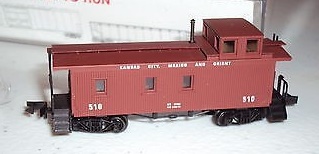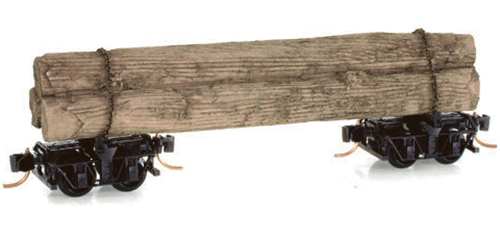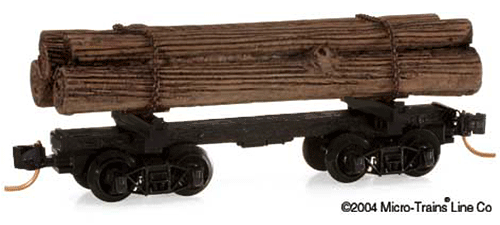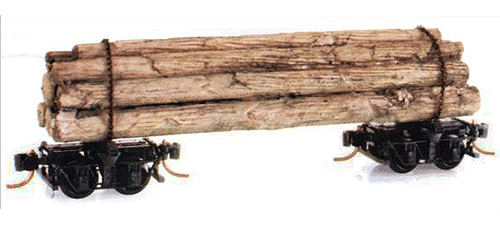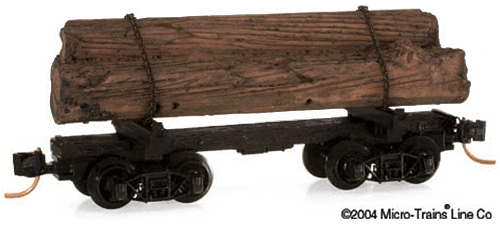Model Information: Originally manufactured by MDC Roundhouse, this tooling was later acquired by Athearn. This model Features:
Based on Model Die Casting tooling;
A perfect match for our Old Time 2-8-0 steam locomotive;
Clear window glazing;
Molded truss rods with turnbuckles;
Molded plastic underframe with brake cylinder;
Screw mounted trucks for accurate tracking;
Truck mounted magnetically operated knuckle couplers;
Plastic wheels. The MDC version carries Rapido couplers.
Prototype History: The origins of the railroad caboose appear to date back to the 1840s when Nat Williams, a conductor of the Auburn & Syracuse Railroad (a later affiliate of the New York Central) became fed up with cramped and uncomfortable quarters to do paperwork (a common job of the conductor, whose responsibility is general oversight and control of a train, passenger or freight), which was usually done in either a free space of a passenger car or combine/baggage car. To fix this problem, Williams found an unused boxcar and using a simple box and barrel, as a seat and desk, set up shop in the car to do his duties. Not only did he find out he had plenty of room to work but also figured that he could use the unused space to store tools (flags, lanterns, spare parts, etc.) and other essentials to have on board whenever needed (such things become commonly stored on the caboose).
Perhaps the most striking feature ever applied to the railroad caboose was its cupola. According to the story, conductor T.B. Watson of the Chicago & North Western in the 1860s reportedly used a hole in a boxcar’s roof (which he was using as a caboose) to get a better vantage point of the train ahead. It is said that Watson was amazed by the view afforded from the position being able to not only see the train ahead but also from all sides, and to the rear as well. He apparently convinced C&NW shop forces to construct a type of open observation box onto an existing singe-level caboose with windows all around where one could sit and view their surroundings. The rest, as they say, is history and the common cupola was born.
Perhaps the most striking feature ever applied to the railroad caboose was its cupola. According to the story, conductor T.B. Watson of the Chicago & North Western in the 1860s reportedly used a hole in a boxcar’s roof (which he was using as a caboose) to get a better vantage point of the train ahead. It is said that Watson was amazed by the view afforded from the position being able to not only see the train ahead but also from all sides, and to the rear as well. He apparently convinced C&NW shop forces to construct a type of open observation box onto an existing singe-level caboose with windows all around where one could sit and view their surroundings. The rest, as they say, is history and the common cupola was born.
Road Name History: 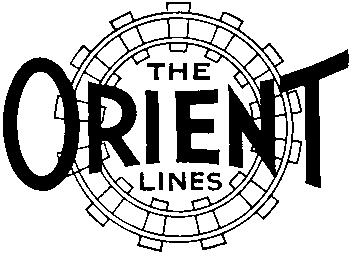 The Kansas City, Mexico and Orient Railway, started in 1900 by American railroad entrepreneur Arthur Edward Stilwell, was the predecessor to the Chihuahua al Pacífico railroad in Mexico. It was intended to reach the Pacific Ocean at Topolobampo, Sinaloa.
The Kansas City, Mexico and Orient Railway, started in 1900 by American railroad entrepreneur Arthur Edward Stilwell, was the predecessor to the Chihuahua al Pacífico railroad in Mexico. It was intended to reach the Pacific Ocean at Topolobampo, Sinaloa.
The United States portion was incorporated in 1900 as the Kansas City, Mexico and Orient Railway, and completed between Wichita, Kansas and Alpine, Texas. Grading took place between El Dorado, Kansas and Bazaar, Kansas. Primary shops were first located in Fairview, Okla. In 1910 the Fairview shops were destroyed by fire and the shops were then reestablished in Wichita. It was forced into bankruptcy in 1912, but its receiver William T. Kemper was to make a fortune when oil was discovered under its tracks. In 1914, it was reorganized as the KCM&O Railroad. Another reorganization in 1925 returned it to its original name. It was popularly called The Orient railroad.
The KCM&O was acquired by the Atchison, Topeka and Santa Fe Railway in 1928, mainly to gain access to the west Texas oil fields. The Santa Fe then sold the Mexican portions. Operating rights on the portion (South Orient Rail Line) from San Angelo to Presidio later were awarded to Texas Pacifico Transportation. At the end of 1925, KCM&O and KCM&O of Texas together operated 738 miles of road on 859 miles of track; they reported a total of 330 million net ton-miles of revenue freight and 8 million passenger-miles.
From Wikipedia

The United States portion was incorporated in 1900 as the Kansas City, Mexico and Orient Railway, and completed between Wichita, Kansas and Alpine, Texas. Grading took place between El Dorado, Kansas and Bazaar, Kansas. Primary shops were first located in Fairview, Okla. In 1910 the Fairview shops were destroyed by fire and the shops were then reestablished in Wichita. It was forced into bankruptcy in 1912, but its receiver William T. Kemper was to make a fortune when oil was discovered under its tracks. In 1914, it was reorganized as the KCM&O Railroad. Another reorganization in 1925 returned it to its original name. It was popularly called The Orient railroad.
The KCM&O was acquired by the Atchison, Topeka and Santa Fe Railway in 1928, mainly to gain access to the west Texas oil fields. The Santa Fe then sold the Mexican portions. Operating rights on the portion (South Orient Rail Line) from San Angelo to Presidio later were awarded to Texas Pacifico Transportation. At the end of 1925, KCM&O and KCM&O of Texas together operated 738 miles of road on 859 miles of track; they reported a total of 330 million net ton-miles of revenue freight and 8 million passenger-miles.
From Wikipedia
Brand/Importer Information:  MDC Roundhouse was founded in California in 1938 and relocated in 1993 to Carson City, Nevada due to statewide restrictions on painting. MDC Roundhouse was a producer of both RTR (Ready-to-Run) and kit versions of N Scale rolling stock as well as RTR locomotives. They entered the N scale market in 1979 with a Thrall Hi-Side Gondola and a Hi-Cube Single Door Box Car. MDC Roundhouse was purchased by Horizon Hobbies in June of 2004, when its owner since 1938 C. H. Menteer retired, and merged into their Athearn line.
MDC Roundhouse was founded in California in 1938 and relocated in 1993 to Carson City, Nevada due to statewide restrictions on painting. MDC Roundhouse was a producer of both RTR (Ready-to-Run) and kit versions of N Scale rolling stock as well as RTR locomotives. They entered the N scale market in 1979 with a Thrall Hi-Side Gondola and a Hi-Cube Single Door Box Car. MDC Roundhouse was purchased by Horizon Hobbies in June of 2004, when its owner since 1938 C. H. Menteer retired, and merged into their Athearn line.
Unlike many of their contemporaries which contracted with European firms to produce their products, MDC made their own toolings. They made several popular body styles and produced them for road names that many other vendors (even Micro-Trains) wouldn't touch. This made them popular with modelers. Also, their un-assembled "kits" permitted a lower price point so they were popular with "runners" as well as "modelers".
Of particular interest was the attention given to modern 50 foot steel boxcars. They made some attempt to accurately mold the differences into distinct models to represent each of the major prototype manufacturers products. They have distinct toolings not only for the different products from FMC, BFF and PS, but also multiple models for each of these manufacturers including "standard" vs "Youngstown" doors and "waffle" vs. "rib" sides. In total they produced 13 different versions of the 50 foot steel boxcar.

Unlike many of their contemporaries which contracted with European firms to produce their products, MDC made their own toolings. They made several popular body styles and produced them for road names that many other vendors (even Micro-Trains) wouldn't touch. This made them popular with modelers. Also, their un-assembled "kits" permitted a lower price point so they were popular with "runners" as well as "modelers".
Of particular interest was the attention given to modern 50 foot steel boxcars. They made some attempt to accurately mold the differences into distinct models to represent each of the major prototype manufacturers products. They have distinct toolings not only for the different products from FMC, BFF and PS, but also multiple models for each of these manufacturers including "standard" vs "Youngstown" doors and "waffle" vs. "rib" sides. In total they produced 13 different versions of the 50 foot steel boxcar.
Item created by: gdm on 2017-02-07 07:32:45. Last edited by Alain LM on 2020-09-04 03:17:26
If you see errors or missing data in this entry, please feel free to log in and edit it. Anyone with a Gmail account can log in instantly.
If you see errors or missing data in this entry, please feel free to log in and edit it. Anyone with a Gmail account can log in instantly.


